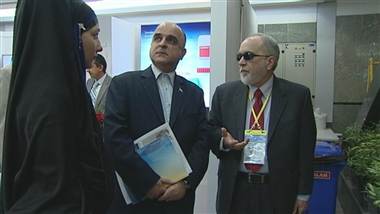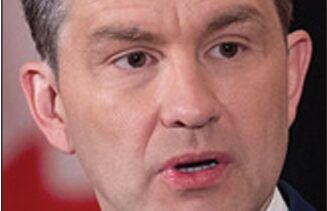November 01-2013

A proposal for Iranian doctors to help organize clinics for the poor in Mississippi may finally get off the ground as a side effect of the improving state of Iranian-American relations.
Mississippi physicians who looked into Iran’s health program for the poor four years ago liked what they saw and wanted to try it in rural Mississippi. But the sour state of relations between the two countries proved an insurmountable hurdle.
Now, Dr. James Miller, director of the Oxford International Development Group in Mississippi, has told NBC News things have changed and he may be able to get the program moving.
“When you look at health disparities and conditions of the Delta region of Mississippi, and the systemic failures of providing low-cost access to an impoverished region, this has led to health … conditions basically on the same level of developing countries,” Miller said recently in Tehran. “Infant mortality rates in the Delta region in some instances are the same as places like Syria or the Gaza Strip – in the heart of the United States – I was shocked.”
Miller began looking around the globe for successful systems of health care delivery that might be adaptable to Mississippi.
Iran’s system stuck out – particularly since it faces similar challenges like a lack of money and medical personnel, as well as vast rural distances and limited public transportation.
Mississippi ranks almost dead last in many national health surveys; for instance it tied Louisiana for last place among the states in America’s Health Rankings 2012, a report by the United Health Foundation.
With challenges like high levels of infant mortality, low birth weights, hypertension, diabetes, smoking and obesity – the Mississippi Delta area in particular is on par with many developing countries.
Iran has developed an integrated health system that Miller says is very successful. The foundation of the system is a network of community health houses or clinics staffed by locals who have an affinity with the people they are serving.
“I looked at the numbers of what they were achieving and infant mortality dropped by 70 percent, health disparities between urban and rural populations disappeared and they provide care to the farthest villages in rural Iran. To me, this was a remarkable achievement,” Miller told NBC.
In Iran’s health care system, village health houses are staffed by villagers known as behvarzes.
The behvarzes are trained to provide basic health services for villages of up to 1,500 people who live within an hour’s walking distance. Male behvarzes take care of sanitation, water testing and environmental projects. The women behvarzes concentrate on child and maternal health, family planning, vaccinations and tracking each family’s births, deaths and medical histories.
There are currently about 17,000 health houses across the country serving 23 million rural Iranians.
Miller explained how even in a dense urban area like Tehran, the health centers fit right into their surroundings.
“Located in the middle of a densely crowded block of apartments and shops – with cars parked so tightly it would be a miracle to maneuver one out again – the health post is well integrated into the community it serves—just as the health houses are in the smaller rural towns and villages.”
Miller has been working on the project for years, but it has been a slow process because the political climate in the US and Iran has not been conducive to cooperation. But, now with the election of President Rohani, and President Obama’s diplomatic efforts, Miller said things have started to move quickly.
“Since the election of Rohani everything has gone into super-overdrive in [terms of] getting things organized,” said Miller. He added that he has sensed a palpable difference during his time in Iran this month.
“Although my experiences in Iran have always been positive and I’ve found the people warm, open, friendly and generous, this trip has revealed something more – a strong feeling of hope that relations between the US and their country will improve and the animosity coming from both sides will end very soon.”
Miller said there is a great deal of mutual respect between his Iranian and American colleagues.
“Health diplomacy has been going on for many years, it’s a foundation to build on. Colleagues of mine were frightened to come to Iran, but once here, people were so warm and generous it’s like all those misconceptions just flowed away,” said Miller. “The people of Iran and America are natural friends and we can collaborate and generate a lot of good things together.”
While in Iran. he plans to sign a memorandum of understanding that will detail the next phase with Iranian physicians, health care experts and researchers coming to the Mississippi Delta to help implement the program.
“I think now we have a chance to put [the Iranian model] into play and that could be a miracle.”
Since the 1980s, rural Iranians have been able to seek treatment at their health houses. These are the first stop for medical care, but not an emergency room. They’re staffed by citizens, not doctors, and the focus is on preventive care.
Infant deaths have dropped from 200 per 1,000 births to 26. With the Delta’s rate 10 times worse than Iran’s, a group of volunteers traveled to Iran in 2010 to get a crash course in how health houses work.
“Why not try this?” asked Dr. Aaron Shirley, who had worked around the Delta for 40 years and spearheaded the effort to transform health care in a region.
he project started as part of an agreement between Jackson State University, Shiraz University of Medical Sciences in Iran, Miller’s consulting firm, Oxford International Development Group, and the Jackson Medical Mall, which provides health care to the poor in Mississippi’s capital.
Five doctors from Iran participated in a conference on health disparities at the medical mall in October 2010, and they were taken to the Delta to see the region’s plight firsthand.
“We’re hoping this project will create some kind of trust” between the two countries, said Mohammed Shahbazi, an Iranian-American who is a professor at Jackson State. “This is hope.”
The first hitch was how the project would be funded. Shirley visited Capitol Hill and approached some local leaders about the cost, which he estimated at $250,000 annually. But it was hard to generate interest in something that involved sticky foreign relations, he said.
“We’re hoping to get somebody’s attention eventually. In the meantime, everything is being scrounged,” Shirley said.
Health house workers would have to be paid, but it wasn’t unclear where the money would come from. The care at the health house would be free to patients.
People who are ill can go to the Iranian health houses where workers, who have been trained in medical basics such as taking blood pressure and recognizing symptoms of common illnesses, decide if patients need further treatment at a clinic or emergency room. Health house workers aren’t expected to have advanced medical skills and the houses in Mississippi would be affiliated with local clinics and hospitals.
Miller started out exploring whether the Obama Administration had funds he could tap.
Miller said it’s been difficult to get federal money because the project doesn’t meet the criteria for program funding from the US Health Resources and Services Administration.
“They’re funding programs like diabetes education and not the implementation of health systems, which is exactly what we’re trying to do,” said Miller.
Miller and Shirley contend their plan could save millions in health care dollars because people wouldn’t make unnecessary emergency room visits and preventive care averts costly hospitalizations for chronic diseases.
Health houses also could cut down on hospital readmissions, Shirley said. Patients often ignore the continuing care instructions they get when hospitals discharge them. Under the health house model, if the patient consents, instructions also would be given to health house workers, who would be responsible for helping the patient follow the regimen or contact physicians if that were not happening.
More importantly, health houses would save lives, said Angela Cousin, a retired nurse who was one of the volunteers who visited Iran in 2010.
She recalled a dialysis patient in Mississippi who died because the woman was taking too much potassium. The patient didn’t realize that even though the pills looked different, they had the same ingredient.
“Some of the patients here are reading impaired,” and health house workers would notice those type of details, she said.






















